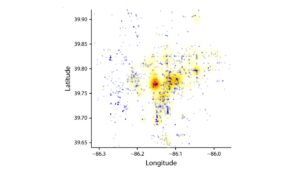Women in Soccer and Brain Injury
Women soccer players are at particular risk. Brain imaging showed repeated "heading" may cause more brain injury in women than in men.

Read Time: 3 minutes
Published:
By name, neither of the two football sports indicate any risk to a player’s head during games, but both are strongly associated with concussions and head injuries. Continuing research chronicles American football players’ susceptibility to chronic traumatic encephalopathy (CTE), a type of brain trauma, but soccer players are also at risk of concussions that could lead to CTE.
Soccer is the only sport in which “heading” is central to the game, but heading (and the collision between players’ heads) maybe related to severe problems with players’ central nervous system. Women players are at particular risk, but not because of differences in the frequency of heading between men and women. Indeed women are more likely to discuss their health and any troubling symptoms than men; despite this, women have shorter breaks from playing than men after concussions, and miss fewer work days.
Women players are at particular risk, but not because of differences in the frequency of heading between men and women.
Since much of the research on soccer-related concussions features subjective reports, Todd Rubin and colleagues set out to use an objective brain imaging technique to compare head injury impacts on men and women. Using diffusion-tensor imaging, the researchers observed that there were sex-based differences in changes in brain tissue, specifically white matter, among amateur players.
Participants in the study actively played soccer for at least six months a year between 2013 and 2016, and completed questionnaires on exposures to headings, past concussions, and medical history. Exposure to heading was assessed through questions that asked about indoor and outdoor soccer activity, as well as involvement in competitive games. Using this information, the researchers created a measure of total heading exposure. Study participants underwent magnetic resonance imaging and diffusion-terror imaging to detect in white matter abnormalities.
After looking at the brain imaging results, repeated heading affected about five times more white matter in women than in men.
After looking at the brain imaging results, repeated heading affected about five times more white matter in women than in men. This indicates that female headers may suffer a higher burden of brain injury than men. Three regions of the brain showed high associations between heading exposure and changes in tissue among both men and women. But the regions where repeated heading had the greatest impact on brain tissue changes among women were the regions that exhibited lesser impact among men.
The researchers concluded that although these changes in white matter may not manifest as a clinical issue (such as a change in behavior) right away, the accumulation of tissue alteration may eventually lead to more physically evident problems. Whether these changes are fully reversible over time remains to be determined. They propose carefully tailoring soccer safety guidelines to address the risks to male and female players, and emphasize that understanding sex-based differences in potential brain injury will help better prevent the debilitating effects of brain damage seen among so many college and professional football players.
Feature image: isitsharp/iStock



